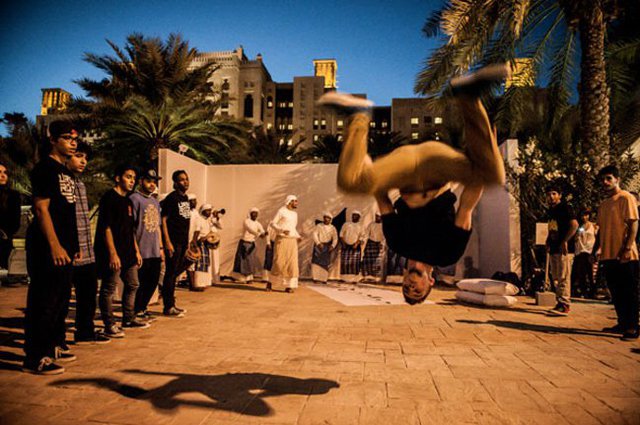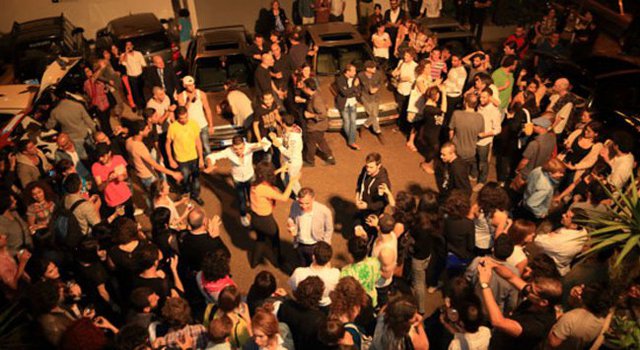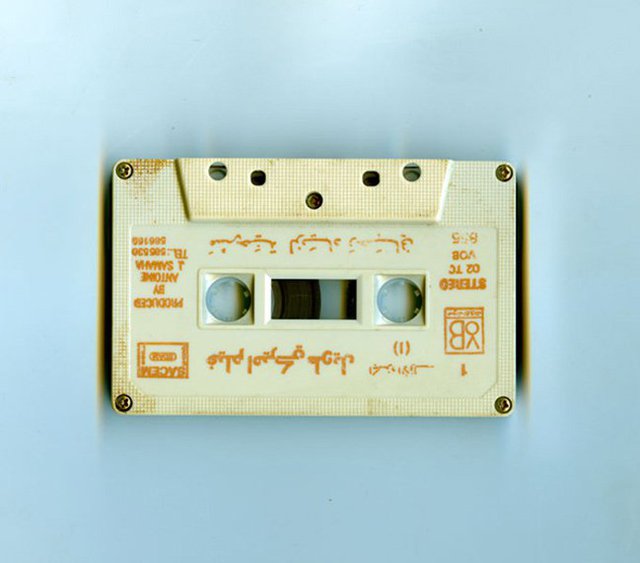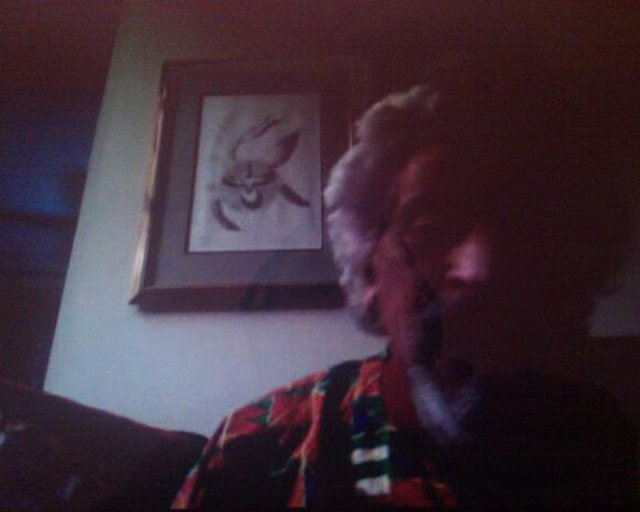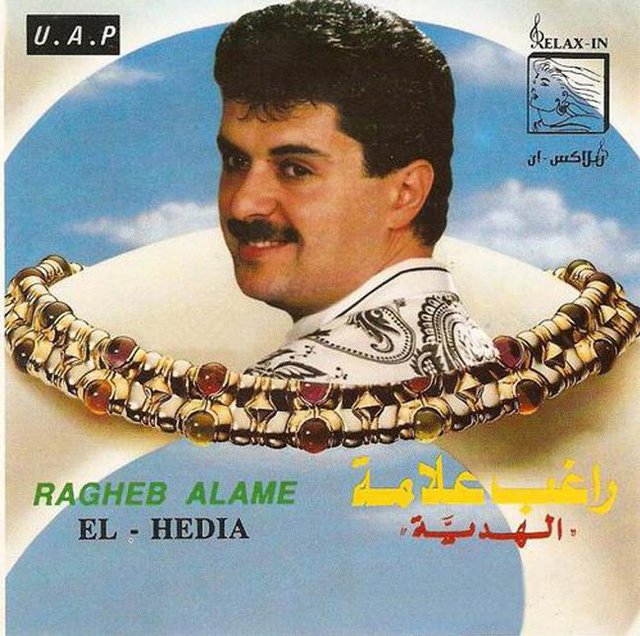Interviews
Samples of Life
Joe Namy in conversation with Garine Aivazian
This year's Home Works opened with a performance by one of the participants of Ashkal Alwan's Home Workspace Program, Joe Namy. The piece, aptly named Automobiles (2012–13), comprised of a set of cars that surrounded the Academy's entrance with their boots opened and music pumping out of each one of them. The performance turned into a raucous party with the participation of the audience, and made the piece all the more reminiscent of Beirut's cacophonous streets. Joe Namy's work explores topics such as memory, identity and power, using sampling, music, video and photography. He is often seen playing with electronic objects that emit sounds, or observing things through lenses. In this interview, he discusses his influences, his work methodology, and generally takes us through his world, quoting the likes of Fanon, Dolphy and Adorno.
Garine Aivazian: Tell me a little bit about your practice as an artist. You work mostly with sound; do you consider yourself primarily a musician? Did you want to be a visual artist, or did you feel the need to add another dimension to your work in order to express the things you were trying to express?
Joe Namy: Yes. Sound plays an important role in my work, but, more specifically, music. Music is how I choose to understand the universe. And any sound can become music, since music is just 'organized sound'. How we choose to listen to the world tells us quite a lot about our humanity. If we look at how we consume music, how and where we purchase or acquire music, the tools that are used to produce it and so on, it's all these things around music that I'm interested in. The personality, history, capital, language, power, energy, feelings, technology, future – all wrapped up in melody and rhythm; that's what I'm trying to unpack. I try to think about this across a variety of media, ultimately producing not just sound pieces but through performance, photography, video, radio – whatever fits the concept I'm trying to achieve. I do also make music as well, but I've never felt the need to define myself in terms of artist or musician; it's all related for me. That's not to say that I only make work about music, but it's the underlying force that informs my understanding of the world.
GA: I almost read it the other way round, meaning, it is a tool to make your world understood – if that makes any sense.
What I gather from your answer is that if I ask you a series of questions about your musical preferences, I should be able to find out quite a lot about your personality. So this is my attempt to read your musical fortune: what are your musical preferences? What instruments (musical or not) do you use to make sound?
JN: My life is all samples right now. Sometimes they are field recordings, which I then flip, other sounds are culled from bootleg CDs or the Internet: YouTube, mp3 blogs, ubuweb, etc. I've been doing this ongoing research project focusing on synthesizers, specifically oriental arrangers (aka, the shaabi orgue). It's been a long-term love affair, although I don't use them myself; I'm more into how sounds and styles have developed over the years. Over the past 30 or so years, I grew up with and have been able to witness the evolution and creeping ubiquitous presence of this instrument within Arabic music – it's pretty amazing.
GA: There is always an element of humour in your work: daily observations, subtle criticism of how things run in our world. Is that how you see the world, or is this an effort to make your work more accessible to the general public?
JN: When talking about general accessibility I always think about Fanon's quote, how 'everything can be explained to the people, on the single condition that you really want them to understand.'[1] I do try and make my work accessible, of course I think about audience, but ultimately I myself am the sum of the audience that I hope to engage. I am a complex mix of different, often juxtaposing, interests, and I draw upon all of that. When you start from a common thread that almost everyone is familiar with, humour or something light – maybe a bootleg cassette tape, a sample from a popular song, a specific dance move – then you're able to start a dialogue with your audience from this common and more open place. This is what's most important for me, not necessarily having them understand, because I don't think art is about understanding; it's more about questioning and provoking, but in order to do that you have to first be engaged on some level.
GA: You use the word 'dialogue'. Can you explain that further? How do you think your work communicates with the viewer or, rather, what is your expectation of your viewer?
JN: Well, I am not here to fulfill anyone's expectations, and vice versa. But if someone comes to experience an artwork, they've willingly entered an agreement to begin a conversation, and I see my work as providing certain parameters with which to frame this conversation – through the visual, sonic, kinetic, metaphysical means that only art can do. My favourite works are ones that stay with you long after you experience them, a gesture that unravels itself only through distance and time.
GA: Do you think Beirut feeds your practice? In other words, how much are you affected by your surroundings?
JN: It's a love-hate thing with this city; sadly that's the kind of abusive relationship I'm drawn to. But there's a truth to the cliché where you get inspired by the noises, the smells, fellow artists, daily routines, local bootlegs, the sea. You know I finished grad school in New York and then came for Ashkal Alwan's Homework Space in 2011, and although I've been going back and forth between the USA and Beirut all my life, for the first time felt I could stay, and haven't regretted it. There's a beautiful quote from Halim el-Dabh: 'Electricity brings the world together.' Although there's not a lot of actual electricity here, there is an unmistakable energy, intrapersonal electricity, and generous support to which I'm greatly indebted. Before moving here I was in Detroit as well, both places are very familiar. My favourite place in the city is the Corniche, best people watching in the city, set against the sea. I take a walk there almost every evening, and that's where the Automobile project came out of – synthesizers on the sea. Those synths were blasting out of souped-up car stereos, and those car stereos belonged to a very particular type of young men. Although it's something specific to Beirut, it's also a very common phenomenon for young men in urban settings all over the world.
GA: And I think the Automobile project sums it up beautifully, and combines the settings and turns it into a scene that could come out of any of those urban settings that you speak of, but you can still pick out separate characteristics of individual cities or cultures.
JN: Exactly. Each city has its own sonic fingerprint or sonic landmarks that come out of a specific history. So we have global consumerism that has spread many of the same technologies across the world, in this instance automobiles and giant speaker systems – these technologies become uniquely integrated into a culture, in a way hacked, especially in marginalized communities. These become tools for expression and escape, to assert certain powers that are lacking in other aspects of their life. You've got a shitty job, no girl, still live at home with your mum, in a country with extreme corruption and lack of infrastructure and little hope of progression – it can make you feel very small and insignificant; so you puff your feathers, crank your music super loud, and invest all your time and money into a system that you have full control over. This of course is a bit of a generalization, but it's important to note that I'm not trying to be a sociologist here, my role is not to impartially analyze motives or chart social patterns. I'm simply trying to expose certain threads of their world that maybe we can all relate to, creating a fiction that allows them to open their reality up for us to come experience.
GA: You mix a lot of different genres with sounds and samples from everyday life which add an element of nostalgia to your work. How does sampling enable you to access your musical influences?
JN: I think it's less about nostalgia and more about destroying the past, or reclaiming the past, making it something contemporary and making it my own. I'm more interested in the now, this present moment, than I am with history. Now is the cusp between the future and the past, history is as much a part of that as is the forthcoming. That Eric Dolphy notion of 'when you hear music, after it's over, it's gone in the air. You can never capture it again.'[2] But a sample is actually a captured moment, although something other than what it originally was. It becomes its own thing, has its own lived history and attached baggage. So when you use a sample, there's like a million nuanced decisions that come into play when deciding which sample, how to use it, for what purpose, and so on. The (a(version)s) project (2012) was all about this, I really just wanted to start a dialogue with other artists who use samples to learn more about their practice. To start a discourse around this, especially considering how prevalent it is.
GA: There's an ephemerality about the present though, and that links to Dolphy's quote that you mention which emphasizes the evanescent aspect of music. There's also an 'infinity' in the use of sampling to produce something new. There are infinite intangible possibilities and infinite ways of hearing them. I find it quite safe to say you live in the moment, as if almost everything is allowed because it will not count tomorrow and did not take yesterday into account, yet using samples is creating something new out of the old. Do you think you have a responsibility towards the original piece, or do you separate yourself from it completely?
JN: Actually I see it as just the opposite: the now that I am talking about is this present moment that absolutely takes into account yesterday and tomorrow. Very similar to Dolphy's quote, Adorno reminds us '…no event is purely itself, but receives meaning from what is absent – the past and future – which it then influences in turn.'[3] So it's necessary to understanding the power and history of a sample in order to be able to use it with purpose. This is sampling responsibly, otherwise it becomes pretty much a colonialist tool, like Israeli pesto hummus or something – unauthentic and in poor taste. Half Step (2013), a dance project I did at Art Dubai earlier this year, also tried to tackle this – and it kind of worked and kind of didn't, even after so much planning. But I rather like those kinds of failures; maybe it's what I enjoy most, to be honest. Chance, risk, putting myself and the audience in a situation that allows for the possibility of failure or total collapse, the tension that ensues – those are the situations that I find most dynamic.
[1] Frantz Fanon, Black Skin, White Masks, trans. Richard Philcox (New York: Grove Press, 2004), 131.
[2] Quote taken from the 1964 recording of Eric Dolphy's track 'Miss Ann' from the album Last Date: http://www.youtube.com/watch?v=Ge4j3s3TVTA&feature=youtu.be&t=5m46s
[3] Theodor Adorno, Sound Figures, trans. Rodney Livingstone (Stanford, CA: Stanford University Press, 1999), 114.

